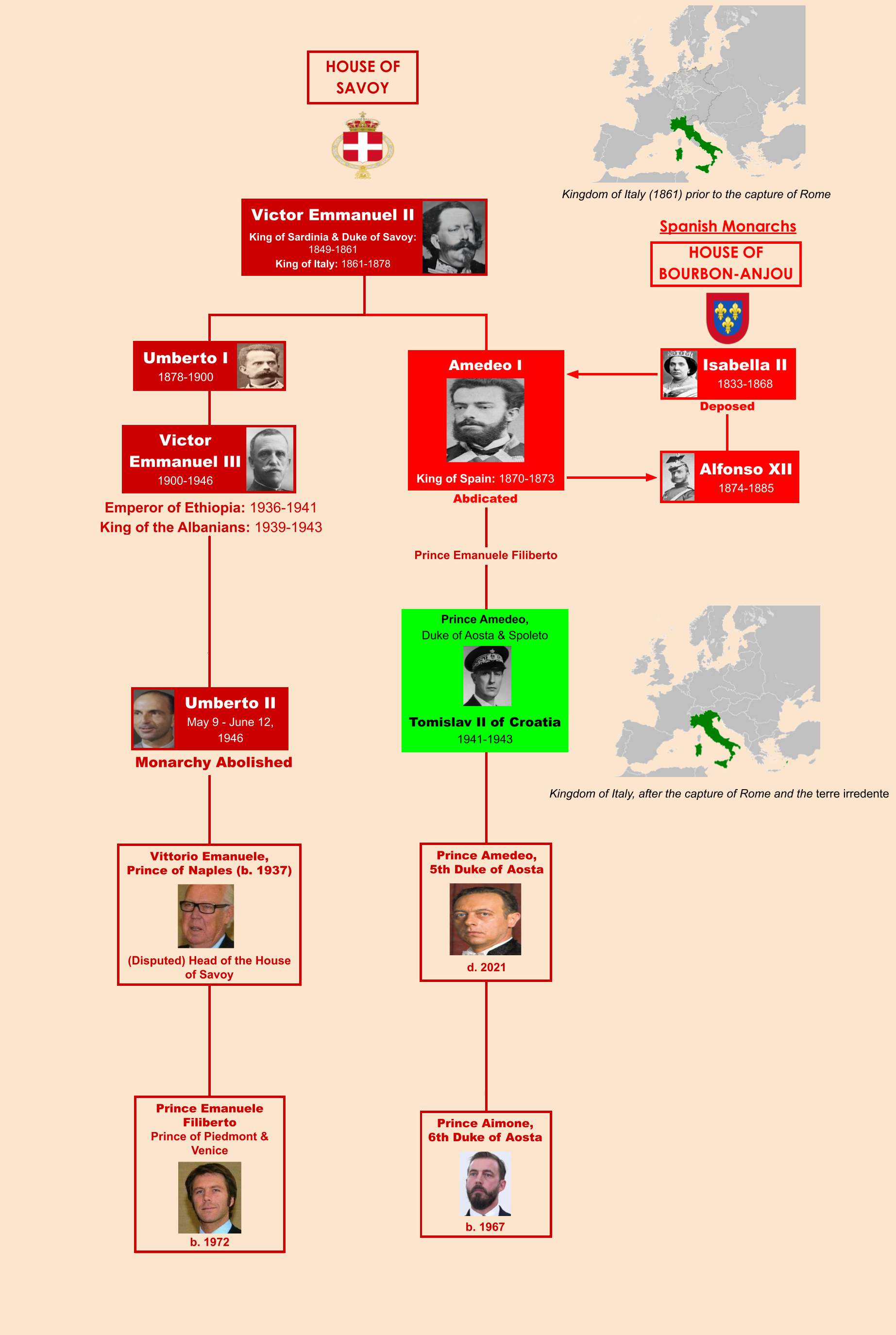HOME | DD
 BenjiSkyler — Kings of Modern Italy
BenjiSkyler — Kings of Modern Italy

#familytree #world_war_ii #world_war_i #fascist_italy #contemporarykingsandqueens #house_of_savoy #italian_unification #age_of_revolution #long_nineteenth_century #chart #diagram #europeanhistory #history #italy
Published: 2023-04-28 20:54:50 +0000 UTC; Views: 2065; Favourites: 5; Downloads: 8
Redirect to original
Description
For centuries since the fall of the Western Roman Empire, the Italian peninsula was mostly divided into smaller states that were either politically autonomous or under the overlordship of neighboring empires. By the late 18th and early 19th centuries, the only states under native Italian rule were the duchy of Savoy and the kingdoms of Piedmont and Sardinia under the rule of the House of Savoy . The unification period, or Risorgimento (meaning "resurgence"), was first sparked by dissatisfaction with the national boundaries defined in the Congress of Vienna having partitioned northern Italy to the Austrian Empire. The movement gained further momentum with the Revolutions of 1848 and the First Italian War of Independence. While Austria prevailed, it was another historical example of losing the battle but winning the war.The second and third Wars of Independence, however, resulted in Austrian peninsular territory being ceded to Italy (the later of the two happening concurrently with the Austro-Prussian War--Italy having allied with Prussia). While the newly unified Kingdom of Italy was established in 1861 under the rule of Victor Emmanulle II of Savoy and Piedmont-Sardinia, unification was not fully completed until the Capture of Rome and the abolition of the independent Papal States in 1871.
Though the nascent Kingdom of Italy was nominally part of the Triple Alliance with Austria and Germany, having lost prospective colonies to France, they remained neutral at the outbreak of war in 1914, as they regarded Austria as the aggressors. Italy would eventually side with the Triple Entente (Great Britain, France, and Russia) during the First World War. The pendulum of world politics would once again swing Italy the other way after the war when promises of territorial concessions went unfulfilled. This event became known in Fascist propaganda as vittoria mutilata ("the mutilated victory "). Under the regime of Benito Mussolini, King Victor Emmanuelle III was merely a figurehead of the Fascist state, who accepted the crowns of Albania and Ethiopia, while the crown of Croatia went to his second cousin. He remained silent about Mussolini's abuses of power, but did advise against entry into a second World War. When Allied forces invaded in 1943 and the king sensed defeat was inevitable, Victor Emmanuelle III ordered Mussolini's arrest and declared war on Germany later that year. He abdicated in 1946 in favor of his son, by which time, Umberto II was pressured to call a referendum that ultimately dissolved the monarchy.
Who currently leads the House of Savoy is currently disputed (because of, what else? a morganatic marriage) between the senior descendant of Umberto II and the senior descendant of Amadeo, who briefly served as King of Spain . A cognatic descendant of Charles III of Spain, Amadeo was elected by the Cortes Generales in 1870 after the deposition of Isabella II in Spain's own Glorious Revolution (not to be confused with the one that deposed James II of England & VII of Scotland in 1689). Faced with political upheaval on both sides of the political landscape, Amadeo abdicated and Spain became a republic. Amadeo then formed the Aosta branch of House of Savoy. The furthest the current internecine dispute escalated was in 2004, when the Prince of Naples punched the Duke of Aosta while guests at the wedding of then Crown Prince Felipe of Spain .
Related content
Comments: 2

👍: 1 ⏩: 0

👍: 1 ⏩: 0






















